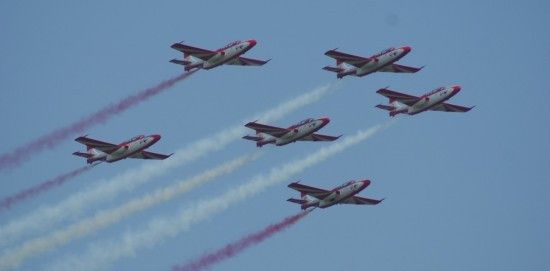Polish “Amber” Rocket In Space
ILR-33 “Bursztyn” [Amber] rocket, developed by the Centre of Space Technologies of the Institute of Aviation, is going to make it possible to obtain more experience in the field of manufacturing rocket engines, which – prospectively – may be used to place the satellites in the orbit.
The ILR-33 Bursztyn probe rocket, developed by the Centre of Space Technologies, is destined to reach the altitude of 100 kilometres in 2016. The said altitude altitude is defined by the Kármán line concept, to be the actual edge of space. Currently, a mock-up of the rocket is going through a test programme in the wind tunnel. The first test launch is planned to happen this year, with target altitude of 10 kilometres. The test is going to make it possible to examine the systems of the rocket, and to verify the way in which the developed design behaves at the lower altitudes, where the flight route is easier to monitor. The test is going to – most probably – take place outside the territory of Poland.
ILR-33 “Bursztyn” rocket is 4 meters high, its diameter is 230 mm, and its initial mass is 200 kilograms. “Bursztyn’s” hybrid propulsion system should make it possible to attain speeds of up to Mach 4. The rocket is fitted with an on-board computer which records the flight parameters and monitors the mission status.
As it has been stated by professor Piotr Wolański, PhD Hab. Eng., during the Development Trends in Space Propulsion Systems:
Using this rocket, we are going to collect experience within the area of manufacturing rocket engines and rockets that may be used to carry the satellites into the Earth’s orbit. The satellite-carrying rocket may feature at least three stages. At the moment we are involved in negotiations with the Ukrainian partners, however the cooperation may also involve other countries.
Should the next year’s test be successful, “Bursztyn” is going to become the first Polish rocket to reach the assumed altitude since the 1970s. Then, the “Meteor” weather rocket programme ended. The “Meteor” rocket was also developed by the Institute of Aviation.
(AH)
